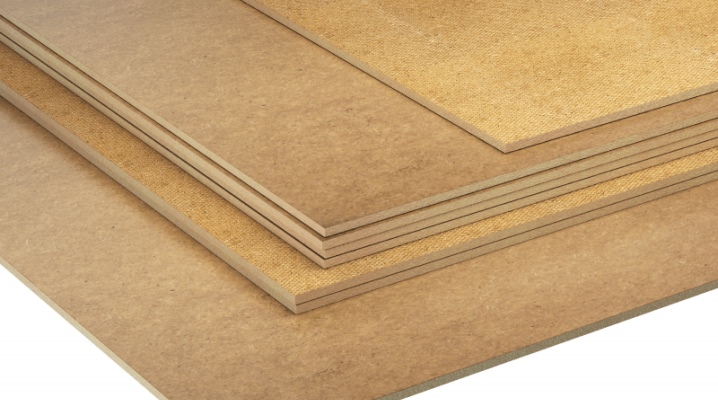What is moisture-resistant fiberboard and what is the impregnation of boards to protect from water?

Wood is an excellent reliable environmentally friendly building and finishing material. However, the final products from it are expensive, and in addition, a rather high percentage of waste is generated in the process of its manufacture. Today there is a wide range of modern materials made from woodworking industry waste. Let's take a closer look at what moisture-resistant fiberboard is and how the plates are impregnated to protect them from water.

Features and scope
For the manufacture of the material, wood fibers are used. The carpet of them is subjected to hot pressing or drying, binding adhesives and special additives are used. Fiberboard (Fibreboard) can have different characteristics and areas of application, which depend on additives, manufacturing method, surface design. Moisture resistant fiberboard is made with the addition of rosin and paraffin.


Fiberboard is widely used, as it has the following positive characteristics:
- does not undergo deformation, holds the dimensions stably, which ensures long service life;
- has sufficient rigidity with low weight and thickness of the sheet, withstands slight mechanical stress;
- good heat and sound insulation properties;
- the material is easy to cut and process, easy to install;
- moderate cost makes it affordable for people with lower income levels;
- when cladding walls and ceilings, thin material makes it possible to save useful space, as well as to make surfaces even without using drywall; in addition, paint and decorative plaster and other finishes adhere well to the slabs;
- there is a choice of slabs in size;
- wear-resistant surface, easy to maintain, is not afraid of exposure to household chemicals;
- regardless of the type of processing and brand of the product, any plate will withstand short-term exposure to moisture.


Ideal things do not exist, fiberboard also has disadvantages, namely:
- slabs do not withstand lateral bending loads;
- cheap materials are made using substances that, in the future, during the operation of fiberboard, will be released into the environment and may turn out to be toxic; the use of such a product is only possible in well-ventilated areas.
The material is often used in the decoration of both residential and office and non-residential utility rooms. Different types of slabs can be laid on floors, walls, ceilings. And also the production of furniture does not do without fiberboard. Back walls and partitions of cabinets, shelves, drawers for pedestals and desks are often made from it.


How are they processed?
General purpose fiberboard is characterized by low moisture resistance. With constant contact with liquid, it swells, which leads to its destruction. In order for the plate to bear the load under conditions of high humidity, manufacturers introduce special substances into its composition. In addition, the finished product can also be treated against moisture. In production, lamination is most often used. A special film is glued to the sheet, high temperature and pressure create conditions for polymerization.
Lamination not only provides protection from moisture, but also from ultraviolet rays and high temperatures.


You can impregnate fiberboard for moisture resistance with your own hands at home. Hardware stores offer a wide range of special products.The protective coating also resists the development of mold. One of the easiest and most affordable ways to protect the material from moisture is to paint it with acrylic paint. The paint will also serve to improve the appearance of the product. The heated paraffin wax can also be used for surface treatment.

Waterproof fiberboard is often used for laying on the floor in rooms where there is high humidity, for example, in the kitchen. And also such products are suitable for wall cladding in the bathroom. Laminate coverings are available in different colors, they can imitate tiles, stones, bricks. This makes it possible to decorate the room in any style.
How to choose?
When choosing fiberboard, you need to pay attention to the following nuances:
- first of all, you need to consider where you are going to use the material; for use in residential premises, you will need a product that does not contain formaldehyde, this will be evidenced by a quality certificate, which the seller must have;
- then you need to decide on the type of material - moisture-resistant fiberboard is suitable for damp rooms;
- depending on the purpose of use (floor covering, wall in the cabinet), choose plates of sufficient thickness and size;
- it will not be superfluous to check the quality of the goods: there should be no bubbles, swelling, oil and paraffin stains, and other damage;
- you should not buy a product if it does not have a label with the necessary information.

In the next video, you can see the recipe for a universal moisture-repellent impregnation.













The comment was sent successfully.